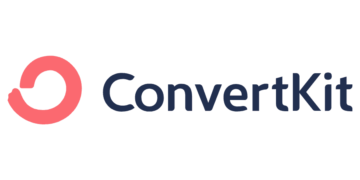No products in the cart.
Are 401(k) Plans Still a Good Idea for the Youthful Generation?
Introduction
As the newest generation enters the workforce, many are questioning whether traditional retirement savings options, such as 401(k) plans, are still a good idea for this youthful generation. With changing economic conditions and shifting priorities, it is important to evaluate the benefits and drawbacks of 401(k) plans for this generation.
One of the main concerns for the younger generation is the uncertainty surrounding the future of Social Security. With the increasing number of retirees and the strain on the system, there are doubts about whether Social Security will be able to provide the same level of benefits to future generations. This has led many young workers to seek alternative retirement savings options, such as 401(k) plans, to ensure their financial security in the future.
However, while 401(k) plans offer certain advantages, they also come with their own set of challenges. One of the main drawbacks of 401(k) plans is the lack of guarantee when it comes to investment returns. Unlike traditional pension plans, where the employer takes on the investment risk, 401(k) plans require individuals to make their own investment decisions. This can be daunting for young workers who may not have much experience or knowledge in investing.
Another concern for the younger generation is the accessibility of their retirement savings. Traditional retirement plans often come with penalties for early withdrawal, which can discourage individuals from accessing their savings when they need it most. This can be particularly problematic for young workers who may face unexpected financial hardships, such as medical emergencies or job loss. In contrast, 401(k) plans offer more flexibility, allowing individuals to access their savings in certain circumstances without facing significant penalties.
Furthermore, the changing nature of work and the rise of the gig economy have also raised questions about the suitability of 401(k) plans for the younger generation. With more young workers taking on freelance or contract work, they may not have access to employer-sponsored retirement plans. This leaves them solely responsible for their own retirement savings, and 401(k) plans can be a valuable tool in building a nest egg for the future.
Ultimately, the decision to participate in a 401(k) plan depends on various factors, including individual financial goals, risk tolerance, and access to other retirement savings options. While there are certain drawbacks to 401(k) plans, they can still be a viable choice for the younger generation looking to secure their financial future. By carefully considering the benefits and drawbacks, individuals can make informed decisions about their retirement savings and ensure a comfortable and secure retirement.
Another advantage of 401(k) plans is the tax benefits they offer. Contributions to a traditional 401(k) plan are made with pre-tax income, meaning that the amount contributed is deducted from the employee’s taxable income for the year. This can result in a lower tax liability and potentially put individuals in a lower tax bracket.
Furthermore, the investment earnings in a 401(k) plan are tax-deferred. This means that individuals do not have to pay taxes on the growth of their investments until they withdraw the funds in retirement. This allows the investments to compound over time, potentially leading to significant growth.
It’s important to note that there are contribution limits for 401(k) plans. For 2021, the maximum contribution limit is $19,500 for individuals under the age of 50. Individuals who are 50 and older are eligible for catch-up contributions, allowing them to contribute an additional $6,500 per year. These limits are set by the Internal Revenue Service (IRS) and may be subject to change in the future.
Another aspect to consider when it comes to 401(k) plans is the vesting schedule. Vesting refers to the ownership of the employer’s contributions to the plan. Some employers may require employees to work for a certain number of years before they become fully vested in the employer’s contributions. This means that if an employee were to leave the company before becoming fully vested, they may only be entitled to a portion of the employer’s contributions.
When it comes to withdrawing funds from a 401(k) plan, there are rules and penalties to be aware of. Generally, individuals can start withdrawing from their 401(k) plan penalty-free once they reach the age of 59 ½. However, if individuals withdraw funds before this age, they may be subject to a 10% early withdrawal penalty in addition to income taxes.
In some cases, individuals may be eligible for a hardship withdrawal from their 401(k) plan. Hardship withdrawals allow individuals to access their retirement savings in certain situations, such as to prevent eviction or foreclosure, pay for medical expenses, or cover funeral expenses. However, hardship withdrawals are subject to income taxes and may also incur the 10% early withdrawal penalty.
Overall, 401(k) plans are a valuable tool for individuals to save for retirement. They offer tax advantages, potential employer matching contributions, and the ability to grow investments over time. It’s important for individuals to understand the rules and limitations of their specific 401(k) plan to make the most of their retirement savings.
4. Flexibility and Portability
401(k) plans offer flexibility and portability, allowing individuals to take control of their retirement savings. Unlike traditional pension plans, which are typically tied to a specific employer, 401(k) plans can be carried from one job to another. This means that even if a young person changes jobs multiple times throughout their career, they can still continue to contribute to and grow their 401(k) savings.
Furthermore, 401(k) plans often offer a range of investment options, allowing individuals to tailor their investment strategy to their risk tolerance and financial goals. This flexibility allows young people to take advantage of different investment opportunities and adjust their portfolio as they gain more knowledge and experience in the financial markets.
5. Financial Discipline and Retirement Readiness
By participating in a 401(k) plan, young individuals are cultivating financial discipline and preparing themselves for a financially secure retirement. Regular contributions to a retirement account instill the habit of saving and help individuals develop a long-term perspective on their financial well-being. This early commitment to retirement savings sets a strong foundation for future financial success and ensures that the youthful generation is well-prepared for the challenges and expenses that come with retirement.
In addition, 401(k) plans often come with tools and resources to help individuals plan for their retirement. These resources may include calculators, educational materials, and access to financial advisors who can provide guidance on investment strategies and retirement planning. This support system can be invaluable for young people who are just starting their journey towards financial independence.
Overall, while the youthful generation may have different financial priorities, 401(k) plans offer numerous benefits that can greatly enhance their financial well-being in the long run. From tax advantages and employer matching contributions to long-term growth potential and flexibility, participating in a 401(k) plan is a wise decision that can set young individuals on a path towards a secure and comfortable retirement.
4. Investment Knowledge and Risk
For the youthful generation, who may have limited investment knowledge and experience, it is crucial to consider their risk tolerance and ability to manage investments effectively. 401(k) plans typically offer a range of investment options, including stocks, bonds, and mutual funds. Understanding the risks associated with each option and assessing one’s own comfort level with those risks is essential. Young individuals who are not confident in their ability to make informed investment decisions may benefit from seeking professional financial advice or opting for a target-date fund within their 401(k) plan.
5. Employer Matching Contributions
One of the key advantages of 401(k) plans is the potential for employer matching contributions. Many employers offer to match a certain percentage of an employee’s contributions, effectively providing free money towards retirement savings. The youthful generation should carefully consider the matching contribution policy of their employer and take full advantage of this benefit. Failing to maximize employer matching contributions means leaving potential retirement savings on the table.
6. Long-Term Financial Goals
While the youthful generation may have immediate financial priorities, it is important to remember that retirement is a long-term goal. Starting to save for retirement at a young age can have significant benefits due to the power of compound interest. Even small contributions made early on can grow substantially over time. By considering their long-term financial goals and the potential impact of starting early, young individuals can make informed decisions about their retirement savings strategy.
7. Tax Considerations
Contributions to a traditional 401(k) plan are made on a pre-tax basis, meaning that they reduce an individual’s taxable income for the year. This can provide immediate tax benefits, especially for those in higher tax brackets. However, it is important to consider the tax implications in retirement. Withdrawals from a traditional 401(k) plan are subject to income tax, which may be higher or lower than an individual’s current tax rate. The youthful generation should evaluate their expected tax situation in retirement and consider whether a Roth 401(k) or Roth IRA, which allow for tax-free withdrawals in retirement, may be a more advantageous option.
In conclusion, while 401(k) plans offer numerous benefits, the youthful generation should carefully consider their unique circumstances and priorities before committing to one. By taking into account factors such as financial flexibility, career flexibility, social security uncertainty, investment knowledge and risk, employer matching contributions, long-term financial goals, and tax considerations, young individuals can make informed decisions about their retirement savings strategy that align with their overall financial objectives.






















![A Comprehensive Review of [Course/Product/Experience Name] 22 man in gray shirt sitting on black chair](https://theamericansidehustle.net/wp-content/uploads/2025/03/man-in-gray-shirt-sitting-on-black-chair-1-scaled.jpg)













































































